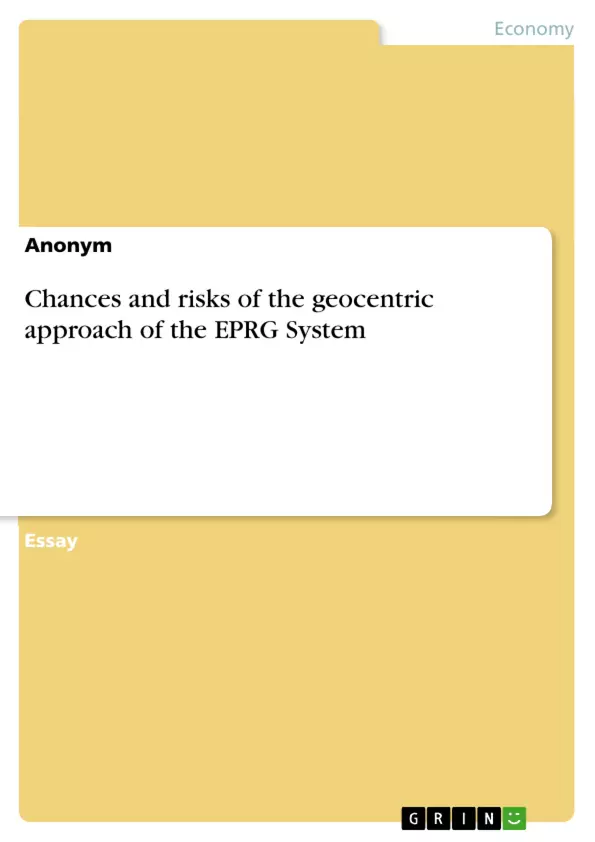What should the company's global management strategy look like?
In this essay, we will first discuss the forms of strategic employee assignment, then introduce the popular EPRG concept by Howard V. Perlmutter, which refers to international management. The geocentric approach of this concept is examined in more
detail. Finally, a practical example of the geocentric approach based on IKEA is explained.
Competition is becoming increasingly fierce in individual countries and sectors. Companies are required to adapt to the current changes in the market in order to remain competitive. And not only that, companies must also offer services that meet the requirements of their customers and stand up to the competition. Many companies must therefore expand their activities beyond their domestic borders and orientate themselves internationally.
Opening up new markets, expanding business activities, exploiting locational advantages (such as tapping global resources, lower labour costs or lower tax burdens).
„A company that wants to survive in the global competition of forces in the long term must increasingly send employees abroad.“
„To be able to operate successfully worldwide, a company needs employees who, in addition to all their skills and abilities, are also prepared to go abroad for the company.“
These statements make it clear that a majority of employees are expected to think globally and that they are aware that foreign assignments may occur.
This increase in the globalization and internationalization of companies is changing the requirements for communication between the company's divisions and for human resources management. The resulting spatial and cultural distance between the parent company and the foreign company requires a strategy.
Table of Contents
- A world of networking…
- Forms of strategic employee deployment
- The EPRG concept by Howard V. Perlmutter
- Ethnocentric Orientation
- Polycentric Orientation
- Regiocentric Orientation
- Geocentric Orientation
- Advantages of Geocentric Orientation
- Disadvantages of Geocentric Orientation
- A practical example on IKEA
- Summary
Objectives and Key Themes
This essay aims to examine the chances and risks of the geocentric approach within the EPRG framework of international management. It utilizes the example of IKEA to illustrate the practical application of this concept.
- Globalization and Internationalization of Companies
- Strategic Employee Deployment and International Assignments
- The EPRG Model and its Geocentric Orientation
- Advantages and Disadvantages of the Geocentric Approach
- Practical Implementation of the Geocentric Approach in International Businesses
Chapter Summaries
- Chapter 1: A world of networking: This chapter introduces the growing internationalization of businesses and the resulting need for strategic employee deployment. It argues that companies require a global mindset to remain competitive in today's market.
- Chapter 2: Forms of strategic employee deployment: This chapter explores various forms of employee assignment, highlighting the contractual peculiarities of each type, including durations, residence, and the right to issue employment contracts.
- Chapter 3: The EPRG concept by Howard V. Perlmutter: This chapter introduces the EPRG model, which describes different orientations towards international management. It specifically examines the geocentric approach, outlining its advantages and disadvantages.
Keywords
Key terms and concepts explored in this essay include: internationalization, strategic employee deployment, international assignments, EPRG model, geocentric orientation, globalization, competitive advantage, and global mindset.
- Arbeit zitieren
- Anonym (Autor:in), 2020, Chances and risks of the geocentric approach of the EPRG System, München, GRIN Verlag, https://www.grin.com/document/1059904



